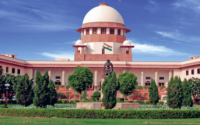Development of the Concept of Video Conferencing
It is rightly said that law must keep pace with the scientific and technological advancements taking place in society. Our Indian criminal justice system requires numerous alterations of the statutory laws to deal with the load on the investigators and judges. One of the crucial changes that require attention is the development of the concept of video conferencing. In Som Prakash vs. the State of Delhi, 1974 Cri. LJ 784, the Supreme Court accurately observed that “in our technological age nothing more primitive can be conceived of than denying discoveries and nothing cruder can retard forensic efficiency than swearing by traditional oral evidence only thereby discouraging the liberal use of scientific aids to prove guilt.” Video conferencing is one of the most useful and strategic products that enable two or more people to connect virtually at the same time belonging from different time zones and at different locations. It has the ability to reduce the workload of the investigators and judges and also acts as an economical solution for the witnesses who are required to travel from different cities and countries to attend court proceedings.
In 2003, in a landmark judgment, The State of Maharashtra and P.C. Singh vs. Praful B. Desai and Ors., MANU/SC/0268/2003 Supreme Court categorically gave guidelines to avoid the practical difficulties in recording evidence by video conferencing. Later in Amitabh Bagchi v Ena Bagchi, MANU/WB/0305/2004, Calcutta High Court relied on two judgments, Twentieth Century Fox Film Corporation and Ors. vs. NRI Film Production Associates (P) Ltd. MANU/KA/0060/2003 and State of Maharashtra and P.C. Singh vs. Praful B. Desai and Ors., MANU/SC/0268/2003 and pronounced that under Order 18 Rule 4(3) presence does not necessarily mean physical presence. The court also opined that electronic video conferencing is a cost-effective facility and avoids the delay of justice. It is logical that based on persuasive facts and circumstance the courts have used this technology in various cases.
In Bodala Murali Krishna v Smt Badola Prathima, MANU/AP/0999/2006. Andhra Pradesh High Court observed that there should not be any plausible objection for adopting the same procedure of video conferencing, in civil cases as long as the necessary facilities, with assured accuracy exists. For a long time, courts have used the facility of video conferencing in plentiful cases initially to curb ad ministerial issues, to save the costs of both the parties and avoid adjournments.
Present-day, is the time when the courts can make most from the optimum usage of video conferencing. In the wake of the Corona outbreak in the country, CJI S.A. Bobde proposed to introduce the concept of court proceedings vide video conferencing. This development will be a breakthrough for the Indian courts since there cannot be a complete shutdown of the courts in India. With proper guidelines and assurances, it will be much feasible to put a complete ban on “people to people contact”. Some of the assurances by the Supreme Court E-Committee Chairman Justice DY Chandrachud are:-
- By introducing video conferring ‘people to people’ contact will reduce.
- Separate rooms for the counsel for each party will be set up in the Supreme Court premises.
- The lawyer has to download an application to initiate court proceeding vide a video conferencing which could be conducted in his office.
- On the commencement of the court, proceeding vide a video conferencing smart televisions will be set up in the press lounge for the journalists.
- The portal for E-filling will be open 24*7.
- The court proceedings and procedures will soon go digital.
- The Supreme Court Advocates on Record Association (SCAORA) will be consulted before the introduction of the virtual rooms and e-fillings.
Now Virtual proceedings, E-filling, and Paperless documents will be a reality!
By
Heena Jalan
School of Law, KIIT University


